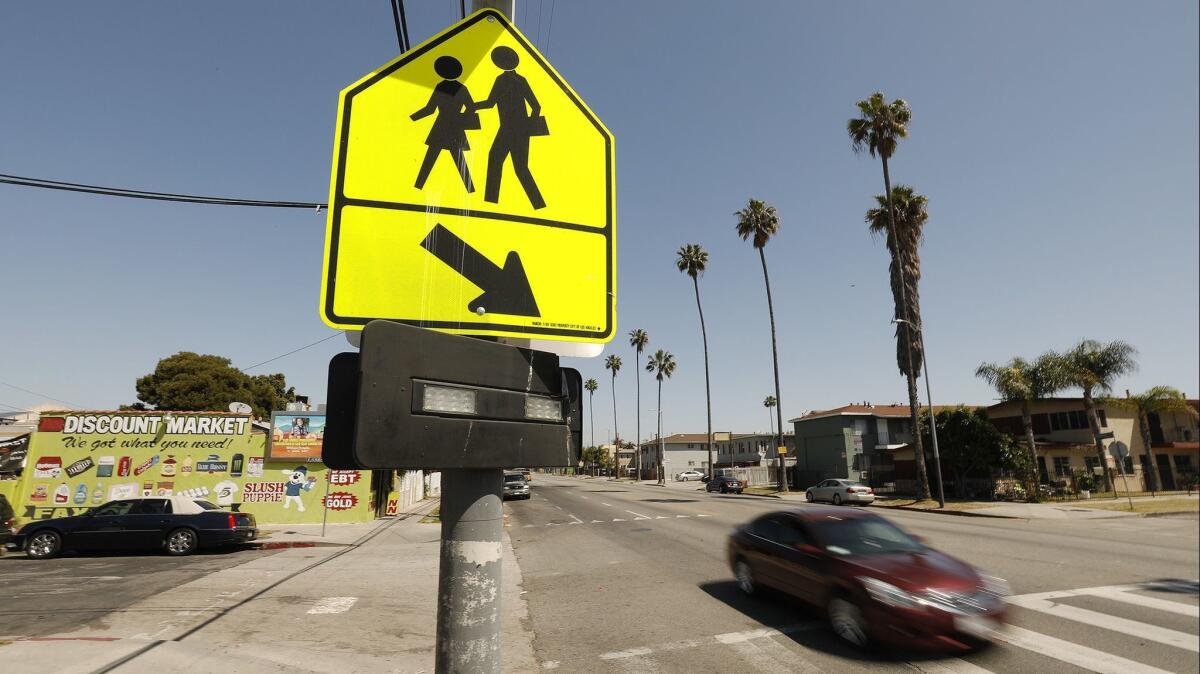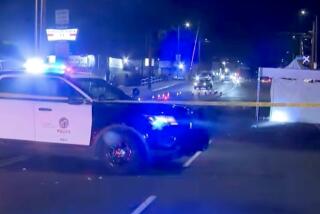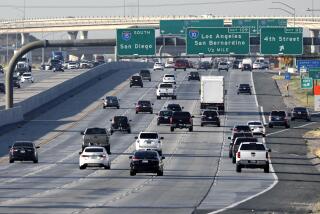‘Alarming increase’: L.A. traffic deaths surge back to pre-pandemic levels

- Share via
Despite a precipitous drop in traffic during the COVID-19 pandemic, the number of people killed in car collisions this year in Los Angeles is now about the same as it was at this point in 2019, officials said Thursday.
After a steep drop in deaths during the last two weeks of March, when the city’s stay-at-home order took effect, the Los Angeles Police Department is seeing an “alarming increase” in traffic fatalities on city streets, Deputy Chief Blake Chow said.
The increase in deaths is connected to a surge of speeding on streets that are emptier than usual, and a higher number of people walking and biking in their neighborhoods, police said.
So far in May, 21 people have died in car crashes, including three people who died in a high-speed crash on Imperial Highway in Willowbrook.
Los Angeles has seen almost as many deaths from traffic crashes as from homicides this year, said Cmdr. Marc Reina, who oversees the department’s traffic operations. Through mid-May, 86 people have died in traffic collisions and 89 have died of homicides, he said.
Before the stay-at-home order, the city saw a fatal traffic collision an average of once every 36 hours, Reina said. After March 19, that rate slowed to once every 2 ½ days — aided by a record low number of fatalities during the first two weeks of the order.
As businesses begin to reopen and traffic picks back up, drivers need to “get used to the fact that there are other people in the streets,” Chow said.
Every driver “has control of a 5,000-pound missile,” and should take extra care in watching for people on foot, on bikes and with strollers and carts, Chow said.
“Right now, we’re all practicing safer at home, and safer at work,” said Damian Kevitt, the founder and executive director of the nonprofit organization Streets Are For Everyone. He said people moving around the city need to practice “safer on the street” too.
With speeds initially up by as much as 30% on some streets, Los Angeles officials turned to technology to try to curb speeding, including tinkering with pedestrian walk signals and leaving a majority of the city’s 5,000 traffic lights on nighttime settings.
The city’s traffic lights are normally synchronized so drivers can get the green light at several intersections in a row. At night, when streets are empty and speeding is more common, each light functions as a separate unit — meaning drivers are less likely to encounter a wave of green lights, and will be forced to stop.
The city is also deactivating pedestrian push buttons at hundreds of crosswalks so people do not have to risk contagion by pushing the button. The slightly longer light cycles also force more drivers to stop.
The walk signal is now automated at major streets in parts of Westlake, Chinatown, downtown, Hollywood and Koreatown. Similar changes are planned in East Hollywood, Highland Park, Miracle Mile, University Park, South L.A., Studio City and Van Nuys.
More to Read
Sign up for Essential California
The most important California stories and recommendations in your inbox every morning.
You may occasionally receive promotional content from the Los Angeles Times.











